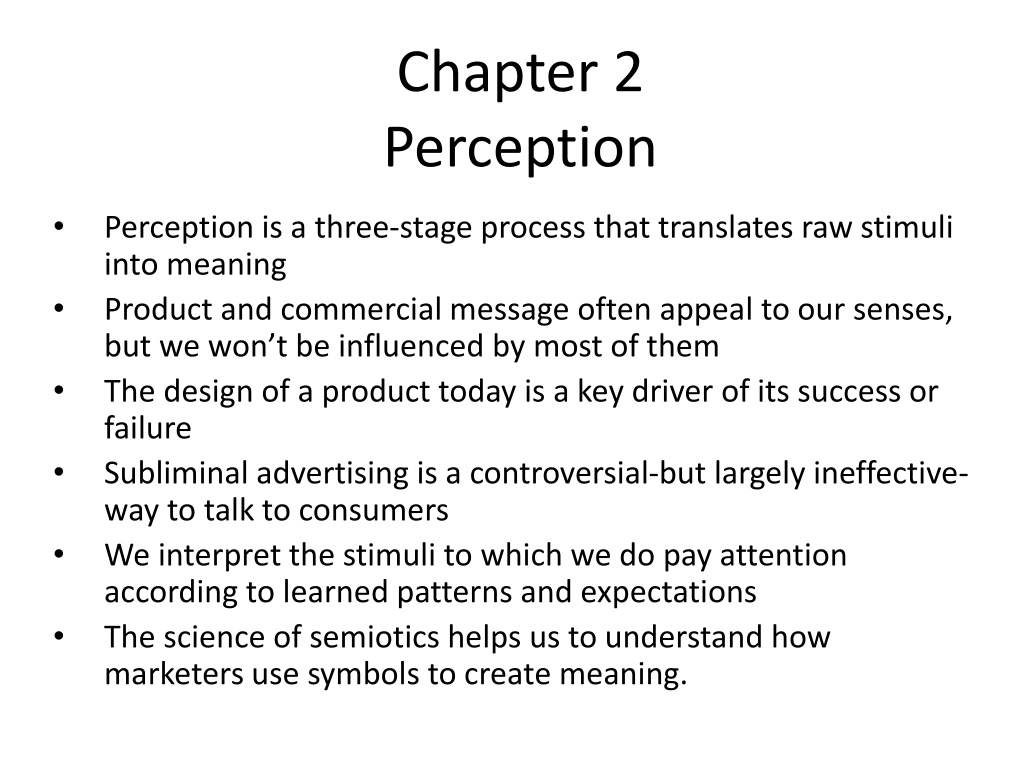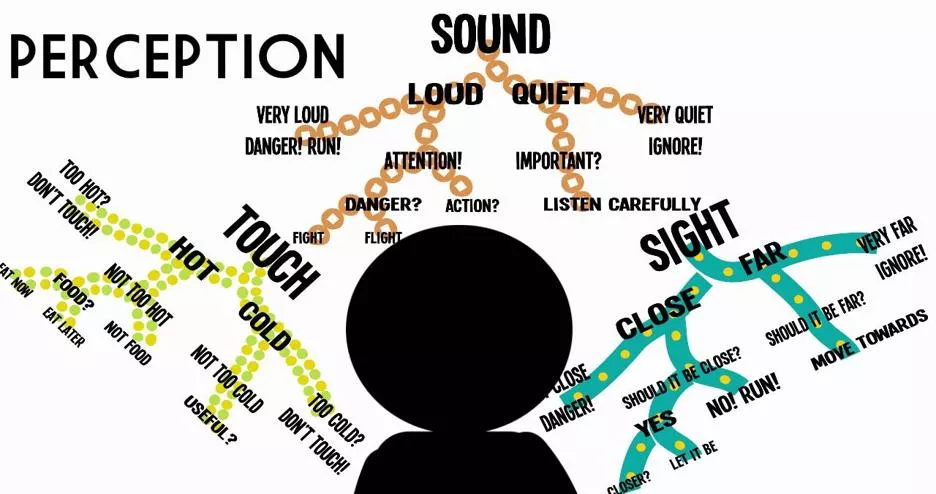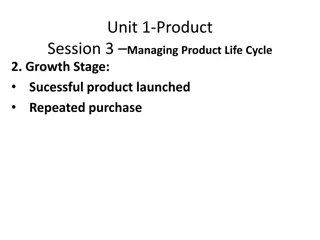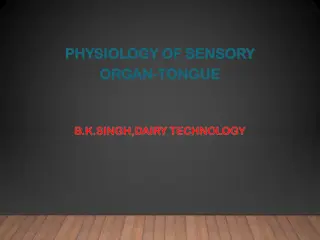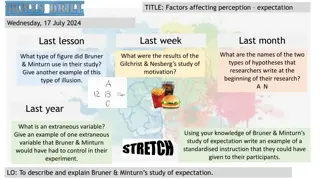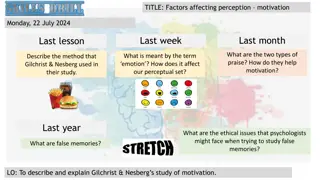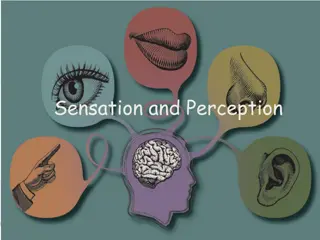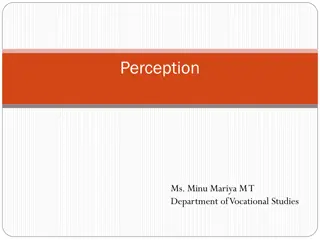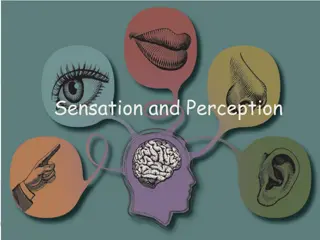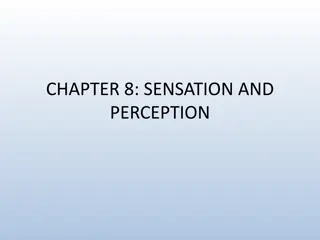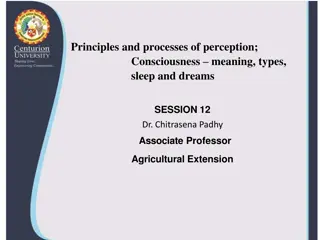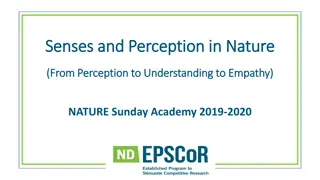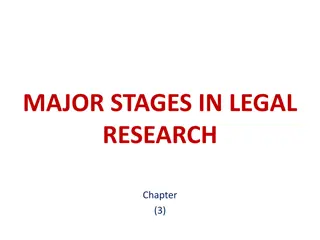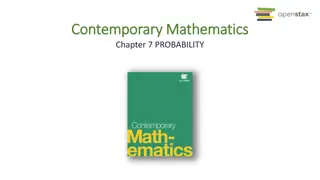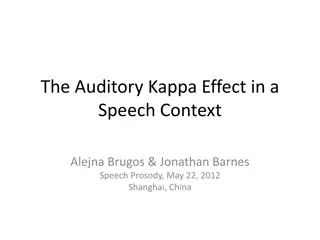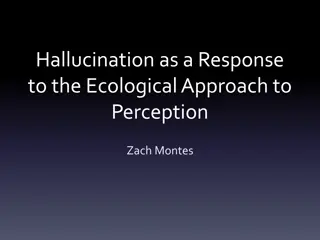The Three-Stage Process of Perception
Perception is a complex three-stage process that involves translating raw stimuli into meaning. This process includes sensation, where sensory receptors respond to stimuli, and perception, where sensations are organized and interpreted. Marketers leverage sensory cues such as colors, sounds, and odors to influence consumer behavior. The science of semiotics helps in understanding how symbols create meaning in marketing. Explore how different senses like vision, smell, sound, touch, and taste play a role in shaping our emotions and behaviors. Learn about sensory thresholds and how our sensory systems detect and differentiate stimuli.
Download Presentation

Please find below an Image/Link to download the presentation.
The content on the website is provided AS IS for your information and personal use only. It may not be sold, licensed, or shared on other websites without obtaining consent from the author.If you encounter any issues during the download, it is possible that the publisher has removed the file from their server.
You are allowed to download the files provided on this website for personal or commercial use, subject to the condition that they are used lawfully. All files are the property of their respective owners.
The content on the website is provided AS IS for your information and personal use only. It may not be sold, licensed, or shared on other websites without obtaining consent from the author.
E N D
Presentation Transcript
Chapter 2 Perception Perception is a three-stage process that translates raw stimuli into meaning Product and commercial message often appeal to our senses, but we won t be influenced by most of them The design of a product today is a key driver of its success or failure Subliminal advertising is a controversial-but largely ineffective- way to talk to consumers We interpret the stimuli to which we do pay attention according to learned patterns and expectations The science of semiotics helps us to understand how marketers use symbols to create meaning.
Sensation refers to the immediate response of our sensory receptors ( eyes, ears, nose, mouth, skin ) to basic stimuli such as light, colour, sound, odour, and texture. Perception is the process by which these sensations are selected, organised, and interpreted.
Sensory system The inputs picked up by our five senses are the raw data that begin the perceptual process
Vision Colours may even influence our emotions more directly. Evidence suggest that some colour (particulary red) create feelings of arousal and stimulate appetite, and others (such as blue) are more relaxing. Smell Odours can stir emotions or create a calming feeling. They can invoke memories or relieve stress
Sound Many aspect of sound affect people s feelings and behaviour. Touch Moods are stimulated or relaxed on the basis of sensations reaching the skin, whether from a luxurious massage or the bite of a winter wind Taste Our taste obviously contribute to our experience of many product
Sensory thresholds The absolute threshold Refers to the minimum amount of stimulation that can be detected on a given sensory channel The differential threshold Refers to the ability of a sensory system to detect changes or differences between two stimuli. The minimum difference that can be detected between two stimuli is known as j.n.d (just noticeable difference)
Subliminal perception Subliminal perception Occours when the stimulus is below the level of the consumer s awareness Subliminal techniques Subliminal messages supposedly can be sent on both visual and aural channels
